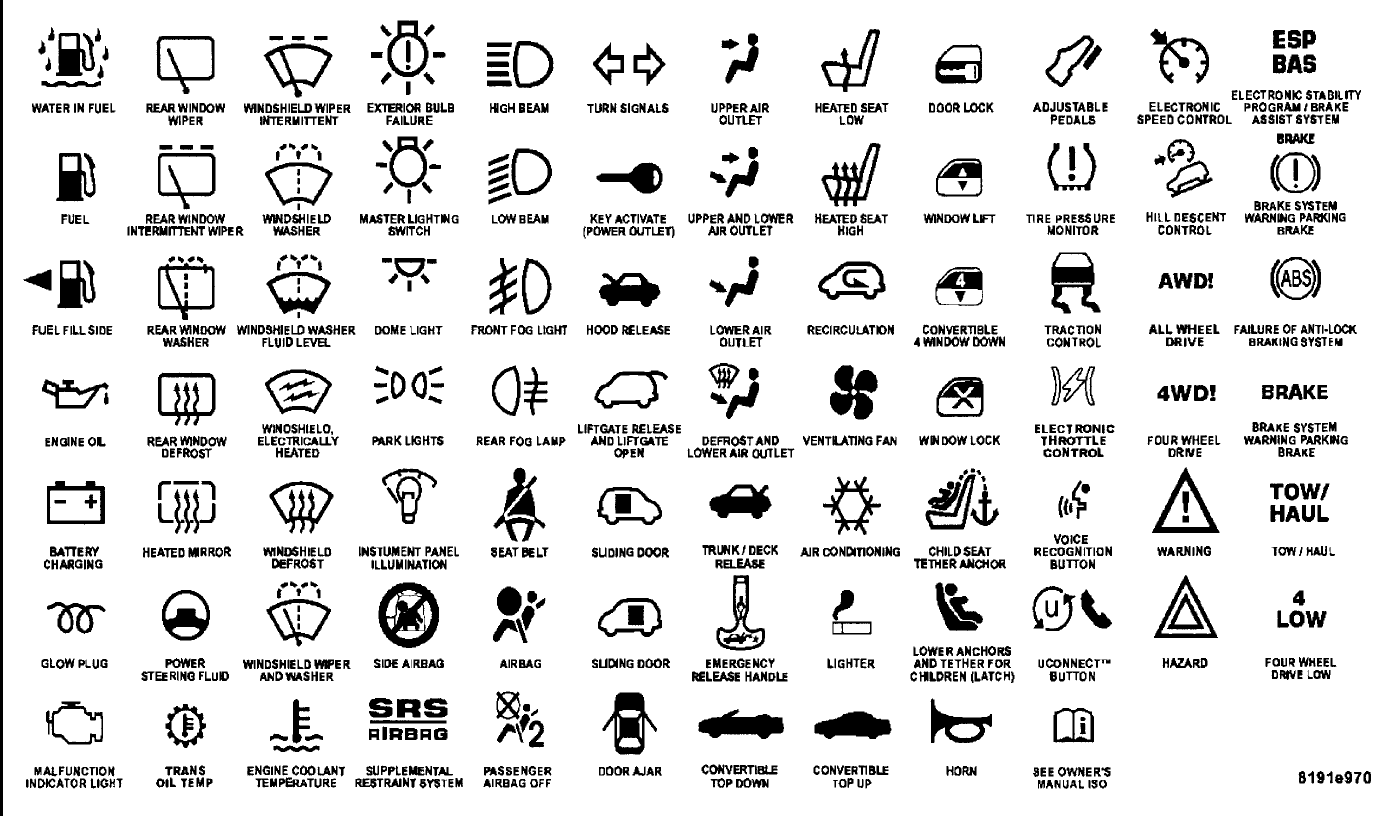
Traction Control or ESP: This light illuminates when your vehicle is experiencing slippery or treacherous conditions. This could be the result of an old battery or other deteriorating parts such as the starter, corroded battery terminals, or an alternator.Ħ. Battery/Charging Alert: This light indicates that your battery’s voltage level may be below normal level. Driving on a flat tire can damage your rim and lead to more expense.ĥ. If your car begins driving poorly, pull over immediately. Driving with under or over inflated tires can be dangerous. Maintaining appropriate tire pressure is important. It could be low due to a change in temperature, or damage to the tire. Tire Pressure Monitoring System (TPMS): This light signifies that a tire pressure is low.


Don’t drive it until you put more oil in.Ĥ. If your oil is low, you could be over the recommended oil change interval or have a leak. Then reinsert the dipstick and remove it to check oil level. The easiest check is to pull out your dipstick and wipe it with paper towel or cloth. Low oil pressure could lead to serious engine problems. Immediately and safely, pull over and turn off your car. Oil Pressure Warning: This light identifies a loss of oil pressure. Your car may be fine but the coolant is low based on the intervals in which the coolant has been filled up last.ģ. While you’re waiting for the engine to cool down, look under your car to see if there are any leaks. Before checking your coolant level, let your car cool down 30 – 60 minutes before removing the radiator cap to prevent burns from steam buildup inside the radiator. An overheated engine can cause significant damage.

If this light comes on, pull over immediately and turn off your car. Coolant Temperature Warning: This warning light indicates that your engine is overheating due to lack of coolant. The light does not mean your engine is going to explode or is low on oil.Ģ. These items all affect how efficiently your car runs.
WARNING CAR DASHBOARD SYMBOLS AND MEANINGS DRIVER
Whether it's a dashboard warning light for your Honda’s engine/emissions, driver assistance, brakes, fuel levels, or something as simple as what lights are being used, it's important to know your Honda.It’s happened to all of us at one time or another, whether we’re in a hurry to get to work or on a family road trip. Luckily for you, we are on hand to let you know what each warning light means. Therefore, it is essential to familiarise yourself with the most important warning lights.

It can be difficult to remember each dashboard warning light during an emergency.


 0 kommentar(er)
0 kommentar(er)
